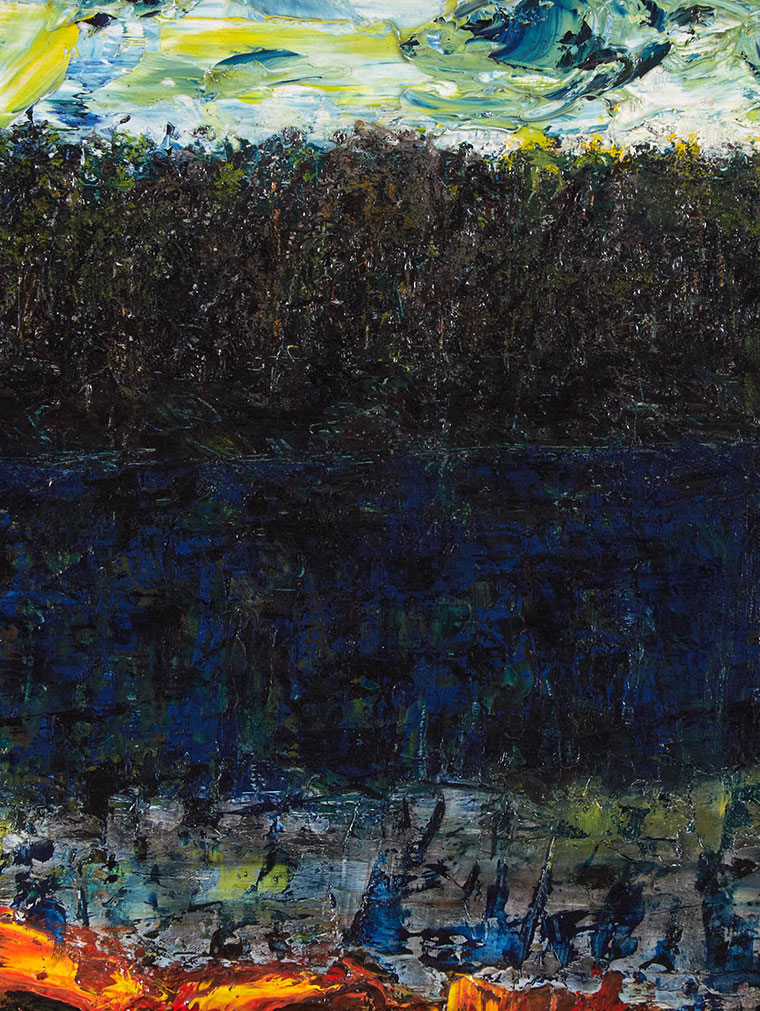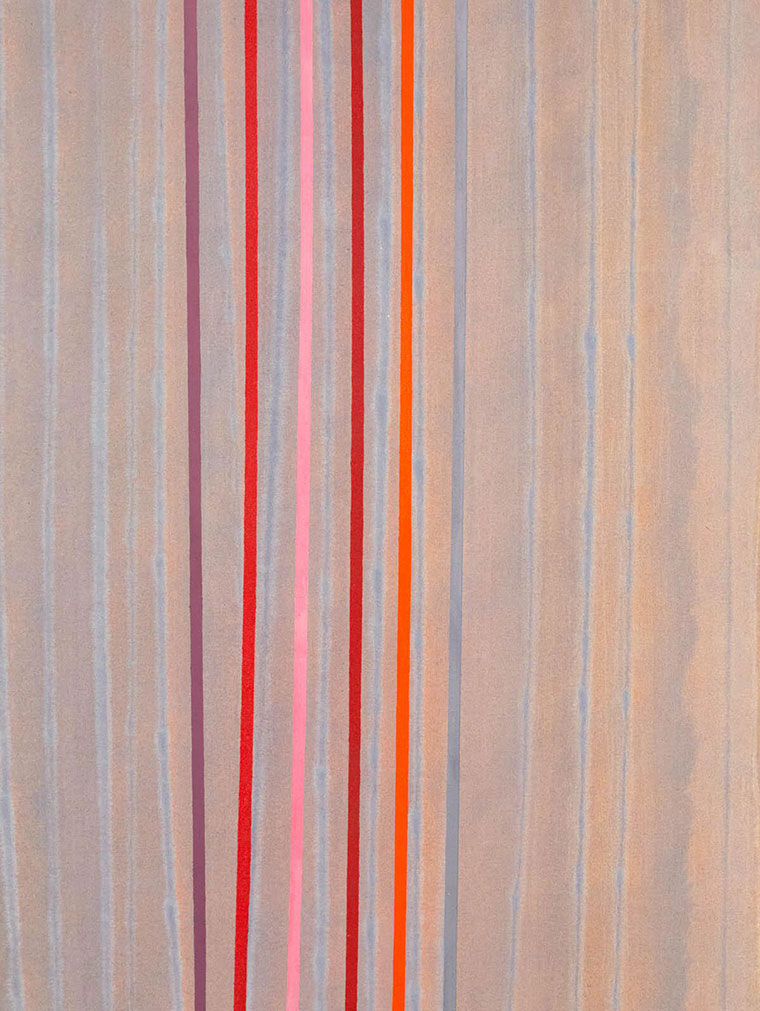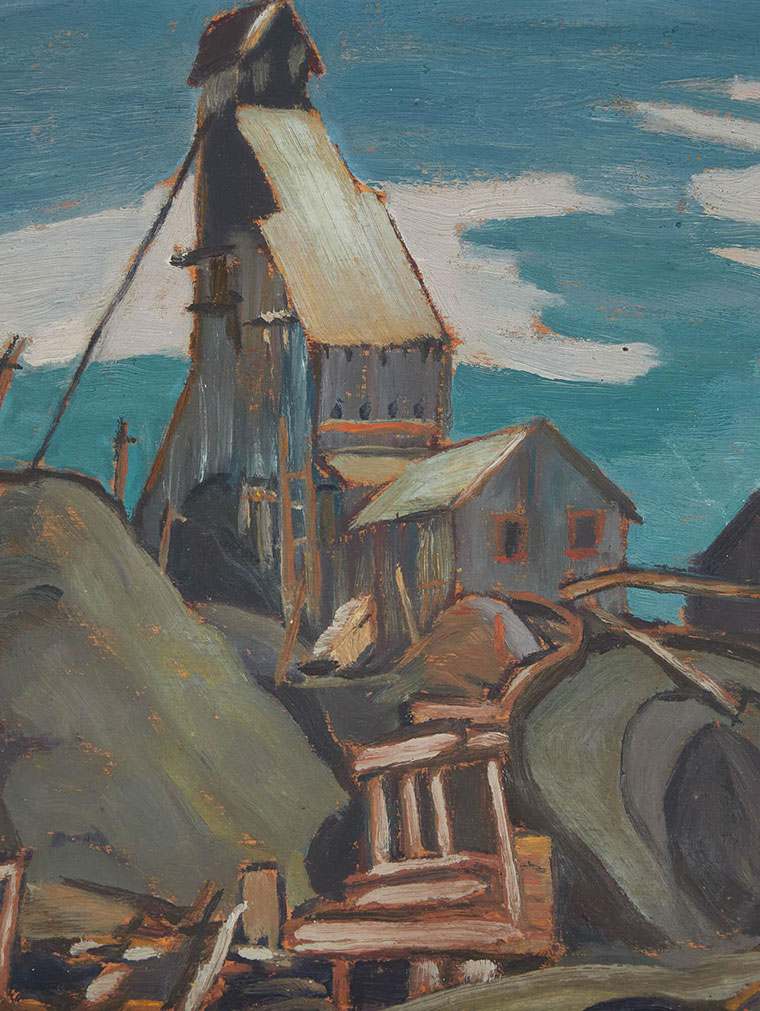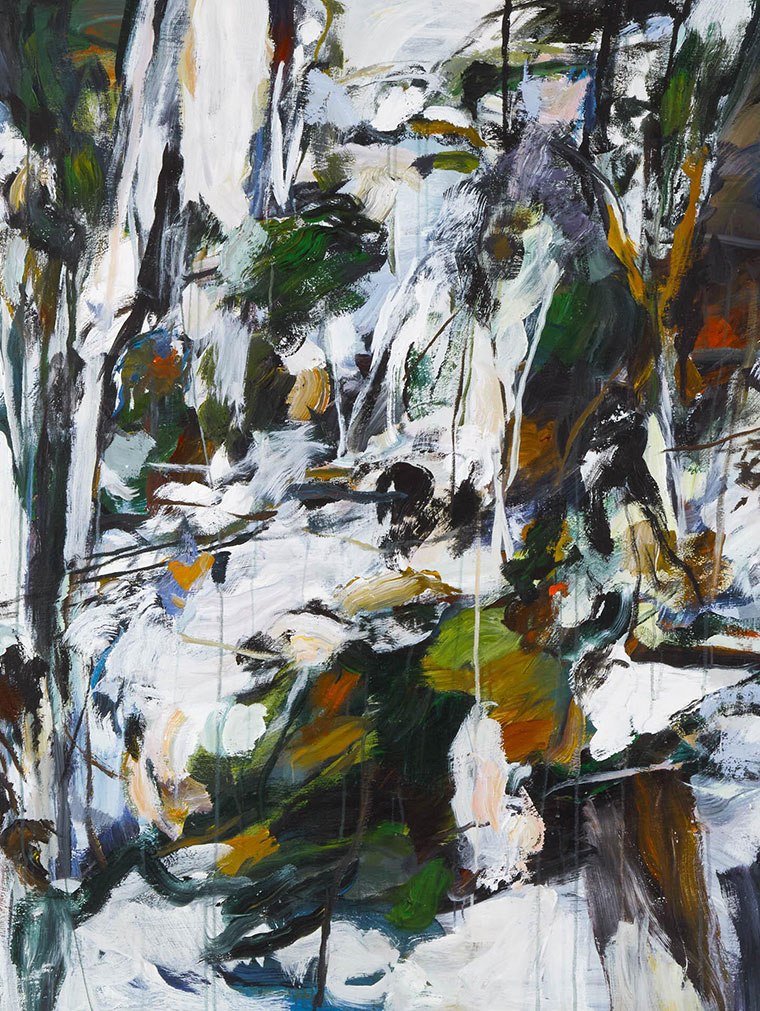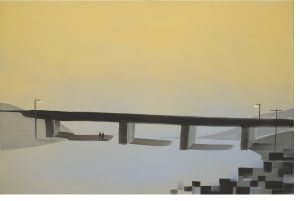
WADDINGTON’S: Robert, you founded Border Crossings in 1977 and Meeka, you have been the Editor of the magazine since 1993. Can you tell us about the current Canadian arts landscape? How has it changed over the years?
BORDER CROSSINGS: Meeka and I are responding to this set of questions as one mind, even though we have differing opinions about a number of things. But here’s the simple truth and we absolutely agree about it: I had an idea about an arts magazine in 1977 and it had a brief run and then Meeka and a number of people came in and fixed it, and ever since Meeka took over, the magazine has been better in ways that I could not have imagined when I started the magazine 47 years ago. I can hardly say what the Canadian art landscape was like then because I didn’t know anything about it. But we have watched it change and I think it’s fair to say that our core values about what Border Crossings is and what it believes art can be, and what it should do, have remained pretty consistent. We believe in art and artists, we value their voices, and we are committed to finding ways to write about what they do in language that is engaged, passionate, intelligent and open to as wide a readership as we can reach.
How did your respective backgrounds shape your path through the art world?
Meeka’s mother had an art gallery and antiques shop in Winnipeg. So, Meeka grew up in a house where art mattered and where objects were understood and appreciated. She studied art history at the University of Winnipeg, received a Gold Medal and throughout her life remained interested in all the arts. I came to Winnipeg to do a post-graduate degree in literature at the University of Manitoba, became a broadcaster with CBC radio and television and started the magazine as a night gig while I was with the CBC. It’s a much more complicated story than the one we’ve just presented but the bare outlines are accurate.
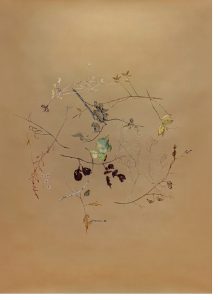
Why was Border Crossings founded? Where does Border Crossings find itself in the present day, and how has that shifted over time?
I started it because Winnipeg had a rich culture and in the first two years the magazine reflected all the arts, including theatre and dance and books, but over the years our focus turned to the visual arts and we have stayed with that interest. What has also changed is that the aesthetic territory we were looking at broadened and we began writing about art across Canada and into the U.S. and Europe. We liked Fernand Léger’s idea of “a local, international culture.” That is the culture that readers and lookers find in the pages of the magazine.
This event is a “Cross Canada Fundraising Auction” — how difficult is it to keep tabs on the incredible breadth of artistic expression in this enormous country of ours (albeit from the geographical centre of Canada!)
Well, we still subscribe to Northrop Frye’s notion that the centre is where you are. So, we have understood our isolation and have decided that we would engage the art world from where we found ourselves. Border Crossings is anomalous: an international art magazine, conceived, edited, designed and published out of Winnipeg, Manitoba. Experiments like Border Crossings only happen, and can only be maintained when you have individuals who, out of passion and vision decide that they can make something out of where they are. We are persons of that kind. So, this auction is a wonderfully defiant idea — we decided to go to a wide array of the best artists, from various generations, and ask them if they would be willing to give us a work of art for this auction. That’s the “Cross Canada” dimension of it. As far as keeping tabs on the breadth of the art world, Meeka sits at her computer and looks at the hundreds of press releases and emails that come into the office, she looks at magazines, art books and catalogues and she sees art and from that decides what is interesting and what she wants to see in the pages of the magazine. And she does pick up on and anticipate what “is in the air.” How she does that is an amazement but the measure of her success is the ongoing quality and perseverance of the magazine. This is me, Robert, talking but I think that against all odds the magazine has gotten better and better as it has gone on, and throughout the pandemic and in its aftermath, the special issues of the magazine have set a higher bar than ever before. Other magazines folded; Border Crossings flowered and got better. That has everything to do with Meeka, who is one of the best editors to have come out of this country. How many magazines can put a claim on 42 years of consistent publication? She has been involved from the beginning and without her it wouldn’t exist.
Can you tell us about putting together an auction of this calibre?
It was a much larger and more complicated project than we initially envisioned and without the magazine’s excellent staff, it never would have happened. But the core of it was that we decided to go to artists who had been covered in the magazine over the years — the section on the website that links to articles, interviews and reviews with and about the artists gives you a sense of the attention that we have paid over the years to Canadian artists — and so we wrote to them, explaining that we were planning a national auction and would they be willing to donate a work for this fundraiser. The response was very gratifying. We have always considered Border Crossings to be an artist’s magazine, written by, for and about artists, and what became evident is that the artists we asked recognized what we were doing and why, and so they responded in the spirit of our request.
We heard that some of the artists contacted you to be included in this auction.
Yes, when some of the artists found out that we were planning this ambitious auction they let us know they wanted to be part of it. But beyond that, we were overwhelmed by a number of artists who made work especially for the auction. Ed Burtynsky gave us “Coast Mountain #15, Receding Glacier, British Columbia, Canada,” an image taken in 2023 but printed just in time for this auction in 2024. It is the third of an edition of nine. The image is simply magnificent. Margaux Williamson, Eleanor Bond, Will Gorlitz and Azadeh Elmizadeh, all painters, actually made their work specifically for this auction, and every one of them is a very good painting. And these artists represent the generational range that the auction covers — Eleanor and Will are senior, distinguished painters, Margaux in the next generation and Azadeh, who only graduated with her MFA from the University of Guelph in 2020, has already shown in Milan, London UK, New York, Toronto and the Southern Alberta Art Gallery in Lethbridge. One of the useful things on the auction website is the bio for each artist that comes after the description of their work. You get a good sense of where the artists have exhibited and you can trace the trajectory of their careers.
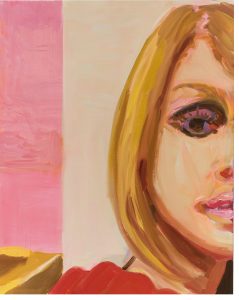
All of the artists included in the auction have been featured in Border Crossings over the magazine’s long history. Can you point collectors towards some notable inclusions either in print or in this auction?
The website is like an introductory art history course in contemporary Canadian art. We believe in the artist’s voice and in the way that our writers have found language to expand on that vision. So, anyone who looks at the content on the website will learn a lot about the artists and their work. But naming notable pieces in the auction — we can honestly say that there isn’t a single work that isn’t notable. I know that sounds like hype but it’s the truth. When Sarah Anne Johnson looked at the website, she told Meeka, “It’s the best collection of art I’ve ever seen in an auction by far!!” Sarah is among the artists who have contributed a piece — her print Three Gold Rectangles is irresistible — but everywhere you look on the site, there are wonders. I mean look at the places where artists go for inspiration: Evan Penny’s astonishing Female Torso made from pigmented silicone is modelled after the Crouching Venus in The Met, and Zachari Logan goes to Caravaggio’s Basket of Fruit from 1599 to make his beautiful Summer Bones No. 1. Look at the different ways that the moon has been rendered in Will Gorlitz’s oil on canvas called Day Moon, Inverse and the perfect form of the FASTWÜRMS raku ceramic, Witch Moon, pink smoke. It’s also intriguing to see how the art forms cross over into one another’s material frames. Don Proch’s Balance – Bosch Tools, 2008, is a cast bronze sculpture using a range of material, silverpoint, coloured pencil and graphite, and Elaine Stocki’s braided tondo is a three-dimensional painting, sitting on the line between painting and sculpture. And while we’re on the subject of sculpture, the piece that grabs your attention and won’t leave is Kim Adams’ Blue Bug, his one-to-12 scale version of a perforated blue Volkswagen. What is the line from Gerard Manley Hopkins: “glory be to god for dappled things.” In that frame, this piece is glorious. We love the way art generates ideas: when we look at James Carl’s Comb from his “Intellectual Property” series, 2015, what comes to mind is the description of the werewolf in Warren Zevon’s pop song “Werewolves of London”: “his hair was perfect.” Think how much more perfect it would have been had he been able to sport Carl’s 48 x 20-inch comb in his back pocket.
What about the range of the auction and the mediums represented?
The range is what you’d expect when you go to artists working across the country in all the disciplines. Painting is particularly well-represented through a wide generational range of painters, including Harold Klunder, Carol Wainio, Janet Werner, Michael Smith, Chris Cran, Cliff Eyland, Kim Dorland, Michael Dumontier & Neil Farber, Holger Kalberg, Natalka Husar, John Kissick, Tim Schouten and Martin Golland. There are some absolute gems among that group. There are also 17 photographers included in the auction, and they come from across the country. We love the work that Suzy Lake, David McMillan, Donigan Cumming, Max Dean, Thaddeus Holownia, Barbara Steinman, Geoffrey James, Susan Dobson, William Eakin, Dominique Rey, Lisa Stinner-Kun, Adad Hannah, Meryl McMaster and Luther Konadu have given us and we marvel at the uncontainable range of subjects they have offered. Then there is the MOCA L.A. 20th anniversary photographic portfolio of 10 prints chosen by Cindy Sherman that includes an image from Shirin Neshat’s “Women of Allah” series. We were also impressed by the various forms that drawing took in the works that artists gave us: there is work in graphite, watercolour, gouache, and white ink by Ed Pien, Alex Bierk, Lorraine Simms, Melanie Authier, Jen Aitken and Paul Robles. There is the precise laser-cut steel lines in Micah Lexier’s Piece Number, and the quirkily erratic cut lines of Guy Maddin’s collages. Actually, there is a fine variation of cutting and edges in the work being offered, from the intricacy of Paul Robles’ Sanguine – Little Bones, 2023, to the elegant lines of Andrew Valko’s set of 12 animal screen prints for the Chinese New Year, and to edginess of the points in Bea Parsons’ Surround Sound monotype.
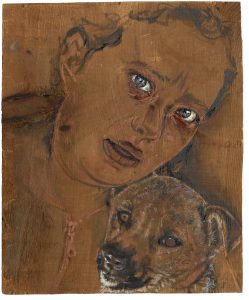
Is there an underlying theme to the curation of this auction, consciously or unconsciously?
The theme that emerged is quality. The artists made the decision about what to put in the auction. There are some pieces that are also historically important. Banff Mountain Landscape, 2003, the working television set sculpture by IAIN BAXTER&, the father of conceptual art in Canada, operates on the same idea as his “Television Work” series; it combines painting and sculpture to make a perfectly Canadian landscape. Wanda Koop’s Green Zone: Freeway, 2004, has a significant pedigree; it is among the first of the works that became “Green Zone,” a series that the National Gallery in Ottawa purchased from Koop’s 2010–11 Retrospective. The painting is one of few remaining from that body of work and it has been released from the artist’s personal collection. Finally, the quiet, elegiac grandeur of Stan Douglas’s Nootka Cannery Wharf, 1996, is the first of two artist’s proofs of a photograph that was part of his “Nootka Series”; the entire series was purchased by the NGC in 1997. These are museum quality pieces. But so will everything else in the auction become at some point in the future. Every time we go back to the auction site what stands out is the exceptional quality of what artists have made available to the magazine and to all the collectors lucky enough to become participants.
What does this auction mean to Border Crossings?
At a personal level it means a lot. As we’ve said, we have been very moved by the responses we got from artists who without hesitation said they would contribute work. It is a tribute to the role Border Crossings has played in our visual culture that artist have been so generous in what they have given us. Anyone bidding on the amazing work that is being offered is supporting both the magazine and the artists who have been our collaborators in this unique venture. And, the auction is an important fundraiser for the magazine.
We have to conclude with heartfelt thanks — to Waddington’s for their remarkable generosity in hosting this event for Border Crossings, to all the artists and their supporting galleries who are listed on the opening page of the auction site. Deepest thanks and gratitude to the splendid people at Border Crossings, with whom we work. Collectively and with skill and good cheer, they made this happen. Alphabetically: Akum Emeka-Maduka, Barbara Fewer, Jean Klimack, Caroline Mousseau, Mielen Remmert.
Our thanks,
Meeka Walsh & Robert Enright
About the auction:
Border Crossings is mounting a special art auction, held online from February 12 — 25. We are calling it a / Cross Canada Fundraising Auction in recognition of the broad range of contributing artists and the breadth the magazine has reflected in the course of its over forty years of publishing. All the artists on this illustrious list have appeared on the magazine’s pages and represent just some of the senior, mid-career and emerging artists with whom we have engaged in our decades-long history.
In our 42nd year of publishing we are recognizing the generous response of the 53 artists included in this special event. Please join us, the artists and their galleries. We are looking for the same generosity in your bidding on these significant art works as the artists have shown in their giving, all in support of the ongoing operations of Border Crossings.
We invite you to browse the full gallery.
See the List of Participating Artists
See the List of Galleries
This auction is offered under special Terms & Conditions. You must be registered in advance of bidding in this auction. Register Now.
Contact [email protected] for more information.



